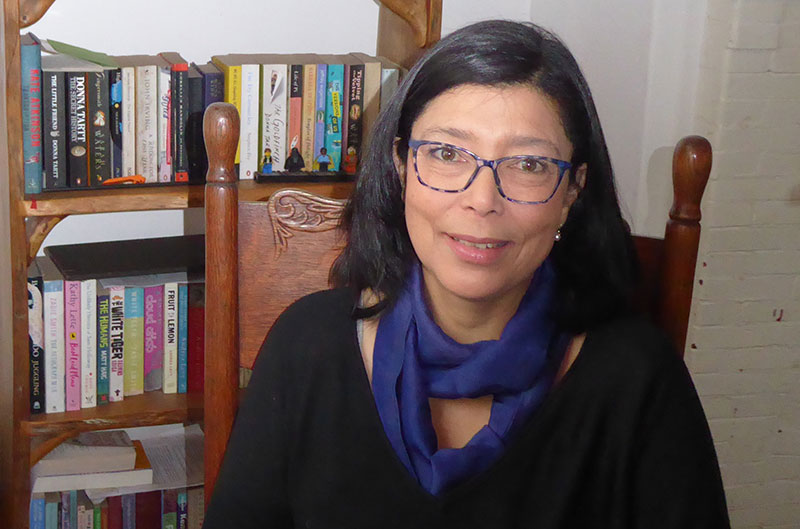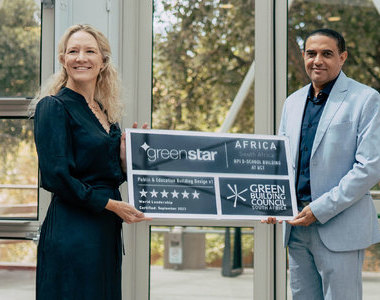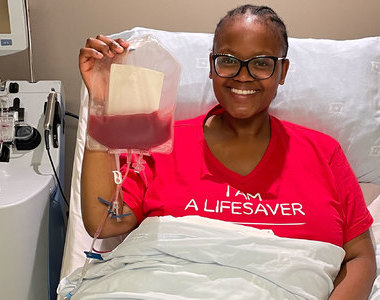Epigenetic autism study breaks new ground
04 June 2020 | Story Nadia Krige. Photos Supplied. Voice Nash Makado. Read time 9 min.
When Dr Colleen O’Ryan embarked on an ambitious project to research the genes associated with autism spectrum disorder (ASD) in a cohort of South African children, she hardly expected the study to lead her right back to the University of Cape Town’s (UCT) Chemical Pathology laboratory where her academic career started thirty years ago.
“I often tell my students that nothing you learn is ever lost,” said O’Ryan, who established and currently heads up the Genetic Autism Cape Town Research group within UCT’s Department of Molecular and Cell Biology.
It would be hard to find better testament to this statement than O’Ryan’s own full-circle journey to the recent publication of “DNA methylation associated with mitochondrial dysfunction in a South African Autism Spectrum Disorder cohort”, a ground-breaking paper appearing in the Autism Research journal.
While the connection seems tenuous at first, this story starts in UCT’s Department of Chemical Pathology in the late 1990s. Young O’Ryan is completing her honours in Medical Biochemistry under the supervision of Professor Eric Harley, a chemical pathologist who – at the time – ran a laboratory looking at rare inherited mitochondrial diseases. (Explained in simple terms: If you think of the cells in the body as cities, mitochondria are the power plants creating energy.)
This is, however, not what O’Ryan is working on. Instead, she and a handful of other researchers find themselves in the ‘animal lab’. As a keen naturalist, it’s no surprise that Harley dedicated half of his laboratory to animal evolutionary genetics. “Basically, we were using the same mitochondria to understand evolutionary relationships,” explained O’Ryan.

From rhinos and tortoises to autism
After completing her honours and upgrading to her master’s degree in the lab, O’Ryan embarked on her PhD, looking at the evolutionary genetics and genetic relatedness of African rhinos.
For much of the next 15 years, this remained her focal species, with the likes of tortoises, albatrosses and crocodiles crossing her desk in the supervision of postgraduates.
O’Ryan quickly established herself as an expert in population and evolutionary genetics, which soon brought researchers looking at human diseases knocking on her door. Simultaneously, she started developing a keen interest in behavioural genetics and toying with the idea of carving a new niche for herself in this field.
So, it was somewhat serendipitous when O’Ryan was asked to collaborate on a cross-disciplinary project to assist with the genetic work on a study being conducted among individuals with ASD. However, this preliminary study found that there was no significant difference between the case and the control group – ie between individuals with and without ASD.
Gathering a deeply phenotyped cohort
Early research looking at genetic studies examining ASD genes did not consistently find differences between the case and the control group, but this did not surprise O’Ryan, nor did it deter her from delving deeper.
As a population geneticist, she immediately recognised the population genetic dynamics in ASD: that all the individuals in the case group have ASD; however, they are on vastly different points along the spectrum.
“I realised that we had to look closely at the actual traits of autism that define ASD,” she explained. “We can’t just lump all the kids together.”
Keen to continue her work, O’Ryan started setting up her own study and – along with postdoctoral researcher Dr Sofia Stathopoulos – established the Genetic Autism Cape Town Research Group.
What they set out to do was work with what is known as a deeply phenotyped case group. In lay terms, this simply means that the individuals who would be participating in their study should have a clearly defined set of “autistic” characteristics.
To equip themselves for the task, members of O’Ryan’s research team, which included a clinical psychologist, headed off to the United Kingdom to complete the course that would allow them to complete the assessment to phenotype their study cohort.
“We’re the only genetics autism research group in Africa that has such a deeply phenotyped study cohort.”
Upon their return, they started recruiting their case group from ASD-specialist schools and private centres. This included the Vera and Alpha schools for learners with autism. They built up a deeply phenotyped ASD cohort of participants who had all been previously diagnosed with ASD by a clinician and excluded individuals with syndromic autism (autism behaviour is one of the effects of another known genetic disorder), or individuals who had been diagnosed by a clinician, but didn’t fulfil all criteria of their assessment.
This left O’Ryan and Stathopoulos with a smaller sample size of children in their case group than planned. What they lacked in numbers, however, they made up for in specifics – all the individuals participating in the study shared a similar set of traits.
“As far as I know, we’re the only genetics autism research group in Africa that has such a deeply phenotyped study cohort,” said O’Ryan.
A similar sized control group of children without any autism traits was then gathered from government schools across Cape Town.
The science
Since large genetic studies at the time had not found consistent genetic associations with ASD, O’Ryan decided that the most sensible and efficient way to go about the research was to look at how expression of genes might differ between case and control rather than gene mutations.
Using a musical analogy, O’Ryan explained that if you think of every individual’s phenotype as a song, the genes are the instruments and the way they sound together is a result of gene expression.
“An affected child may have a whole lot of instruments not working properly and the song is really offkey, while a more subtle version is just slightly out of tune,” she explained.
Using a non-invasive cheek swab, O’Ryan and Stathopoulos collected DNA from their cohort and started investigating how genes’ expression might be altered by focusing on the methylation of the DNA, which affects how much or little proteins are expressed.
“The extraordinary thing we found is that the ‘musical instruments in the orchestra’ that weren’t working properly in our ASD study cohort were genes that affect mitochondrial function,” said O’Ryan. “Which, of course, circles right back to [Harley’s] work in the chemical pathology lab.”
The power of collaboration
Thinking back to research Harley’s group had conducted on mitochondrial diseases where individuals have muscle weakness, intellectual disabilities and behavioural challenges, O’Ryan noticed similar genes in her autism study.
Doing some further reading, they discovered that there was indeed clinical evidence that showed individuals with autism were more likely to have mitochondrial disorders.
To prove this hypothesis and publish their paper, they needed evidence that DNA methylation changes the mitochondrial function.
For this, they approached Professor Francois van der Westhuizen, a mitochondrial disease expert at North-West University. He had set up a method that uses urine samples from children with and without mitochondrial disease to find a signature of metabolism being different in children with mitochondrial disease.
“In a South African cohort of children, DNA methylation is different between children with and without autism.”
“So, we decided to collaborate. I collected urine from my cohort and asked whether he would look if these samples had any signature of mitochondrial disfunction. He did that and we found a metabolic signature that was different between our ASD and control group.”
O’Ryan explained that what makes their paper unique is the fact that it’s the first paper from a South African research group examining a South African group of children using a whole genomic approach, as well as one that used an epigenetic (methylation) approach.
“So, what we’re basically showing is that in a South African cohort of children, DNA methylation is different between children with and without autism, and that this methylation is associated with mitochondrial dysfunction in ASD.”
Their findings also open up a range of new study possibilities for up-and-coming researchers to embark on.
 This work is licensed under a Creative Commons Attribution-NoDerivatives 4.0 International License.
This work is licensed under a Creative Commons Attribution-NoDerivatives 4.0 International License.
Please view the republishing articles page for more information.
Listen to the news
The stories in this selection include an audio recording for your listening convenience.























































































































































































































































































































































































